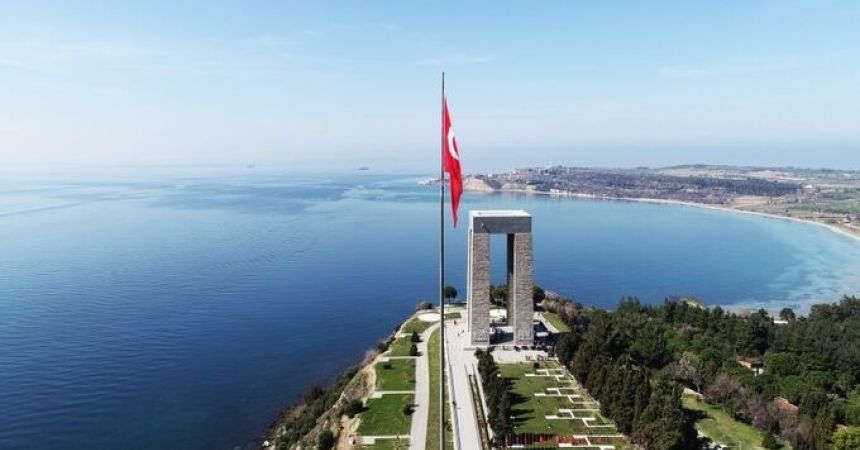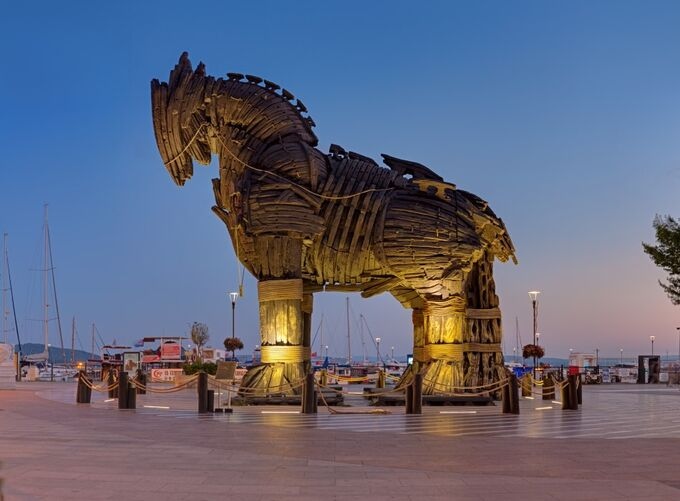
Canakkale & Troy | Turkey’s Historic Treasures
Nestled in Turkey's northwestern region, Çanakkale is more than just a picturesque city. It serves as the gateway to one of the most legendary archaeological sites in the world—Troy. With its rich history and mythological significance, Tour of Canakkale and Troy offer travelers a unique journey through time, blending historical events with ancient legends. This comprehensive guide will take you through the fascinating world of Çanakkale and Troy, offering insights into their historical importance, must-see attractions, practical travel tips, and more.
Introduction to Canakkale
Location and Overview
Çanakkale is a vibrant city located in northwestern Turkey, strategically positioned on the Dardanelles Strait. This narrow waterway connects the Aegean Sea to the Sea of Marmara and has been a crucial point of transit throughout history. The city's location has made it a significant military and trade hub for centuries.
Historical Significance
Çanakkale's history stretches back to antiquity. The city has been known by various names over the millennia, including Abydos and Dardanus. Its strategic importance was highlighted during the Gallipoli Tour Campaign of World War I, where it played a crucial role in the conflict between the Allied forces and the Ottoman Empire.
The Myth and History of Troy
The Legend of Troy
The story of Troy is one of the most enduring myths of ancient Greece. The tale of the Trojan War, as recounted in Homer's epic poem the Iliad, revolves around a fierce conflict between the Trojans and the Greek invaders. The myth is famous for the legendary events leading to the war, including Paris's abduction of Helen, the subsequent siege of Troy, and the famous ruse of the Trojan Horse.
Historical Context
While the story of Troy is steeped in myth, archaeological evidence suggests that Troy was indeed a real city. Located in modern-day Hisarlik, near Çanakkale, the site has been identified as one of the most important archaeological discoveries of the 19th and 20th centuries. Excavations have revealed multiple layers of ancient settlements, providing valuable insights into Troy's history and its role in ancient Anatolia.
Key Historical Figures
- King Priam: The last king of Troy, known for his role in the Trojan War and his tragic fate.
- Helen of Troy: The legendary beauty whose abduction by Paris led to the conflict.
- Achilles: The Greek hero whose rage and prowess were central to the Iliad.
Exploring Canakkale
The City of Canakkale
Çanakkale is a lively city with a rich cultural heritage. It boasts a blend of historical architecture, modern amenities, and beautiful waterfronts.
- Kilitbahir Castle: Located on the European side of the Dardanelles, this fortress offers panoramic views of the strait and is a key historical site.
- Çanakkale Archaeological Museum: Home to an extensive collection of artifacts from Troy and other ancient sites, this museum provides valuable context to the region's history.
- The Waterfront: The city’s waterfront promenade is a perfect spot for a leisurely stroll, with charming cafes, restaurants, and views of the Dardanelles.
Gallipoli Peninsula
The Gallipoli Peninsula, located just south of Çanakkale, is another important historical site. It is known for the Gallipoli Campaign of World War I, which was a major conflict between the Allied forces and the Ottoman Empire.
- ANZAC Cove: The landing site of the Australian and New Zealand Army Corps (ANZAC) during the campaign. It’s now a memorial site with graves and monuments.
- Chunuk Bair: A key battlefield and memorial site dedicated to the New Zealand soldiers who fought here.
Culinary Delights
Çanakkale’s cuisine is a delightful mix of Turkish and Mediterranean influences. Don’t miss local specialties like:
- Seafood: Fresh fish and seafood dishes, including grilled fish and calamari.
- Kebab: Traditional Turkish kebabs, often served with rice or flatbread.
- Baklava: A sweet pastry made with layers of filo dough, nuts, and honey.

Visiting Troy, Turkey
The Archaeological Site
The ancient city of Troy is situated about 30 kilometers south of Çanakkale, near the village of Tevfikiye. The archaeological site has been divided into several layers, each representing different periods of the city’s history.
- Troy I-IV: The earliest layers of the city, dating back to the Bronze Age. These layers include the remains of early settlements.
- Troy VI-VII: The layers associated with the city during the time of the Trojan War. Notable structures include the city walls and the monumental gates.
- Troy VIII-IX: The later Hellenistic and Roman periods, showcasing changes in architecture and urban planning.
Key Features to Explore
- The City Walls: The impressive fortifications of Troy, including the famous "Scaean Gate" mentioned in the Iliad.
- The Trojan Horse: A replica of the legendary wooden horse that played a crucial role in the fall of Troy. It’s a popular photo spot and a symbol of the city's mythological past.
- The Temple of Athena: The ruins of a temple dedicated to the goddess Athena, reflecting the city's religious significance.
Troy Guided Tours and Visits
To fully appreciate the significance of Troy, consider taking a guided tour to Troy. Knowledgeable guides can provide in-depth explanations of the site’s history and mythology, enhancing your visit. Tours often include transportation from Çanakkale, making the journey convenient and informative.
Practical Travel Tips
Best Time to Visit Turkey
- Spring (April to June): Ideal weather with mild temperatures and fewer crowds.
- Autumn (September to October): Pleasant temperatures and a good time for exploring.
- Summer (July to August): Hot and crowded, especially around popular tourist sites.
Accommodation Options
- Canakkale: Offers a range of accommodations from luxury hotels to budget hostels. Options include waterfront hotels with views of the Dardanelles and charming guesthouses in the city center.
- Nearby Villages: Consider staying in nearby villages like Eceabat for a more rural experience.
Getting Around
- Transportation: Public buses and taxis are available for traveling between Çanakkale and Troy. Car rentals offer flexibility if you prefer to explore at your own pace.
- Ferries: Regular ferry services operate between Çanakkale and the Gallipoli Peninsula, providing scenic and convenient travel options.
What to Bring
- Comfortable Footwear: The archaeological sites involve a fair amount of walking and exploration.
- Sunscreen and Hat: Essential for protection from the sun, especially during summer.
- Camera: To capture the stunning landscapes and historical sites.
Cultural Etiquette
- Respect Local Customs: Dress modestly when visiting religious or historical sites.
- Follow Guidelines: Adhere to site regulations and guidelines to preserve the historical integrity of the locations.
Combining Canakkale and Troy with Other Destinations
Nearby Attractions
- Assos: Located to the southwest of Çanakkale, Assos is known for its ancient ruins and stunning coastal views.
- Pergamon: An ancient city with impressive ruins, including the Acropolis and the Asclepius Sanctuary, located further inland.
Extended Itinerary Suggestions
- Aegean Coast: Explore Turkey's Aegean coast with stops in places like İzmir and Kuşadası, known for their historical sites and beautiful beaches.
- Istanbul: Start or end your journey in Istanbul to experience its vibrant culture, historical landmarks, and culinary delights.
Gallipoli and Troy: Unforgettable Turkey Tour Experience
Canakkale and Troy offer a fascinating journey through history and mythology. From the strategic importance of Çanakkale to the legendary ruins of Troy, this region of Turkey provides an enriching travel experience that blends ancient myths with historical realities. Whether you’re a history buff, mythology enthusiast, or simply looking for a unique travel destination, Çanakkale and Troy promise an unforgettable adventure. So, prepare to immerse yourself in the stories and legends of the past as you explore these captivating sites.



